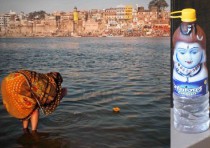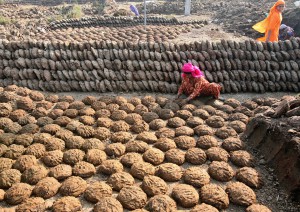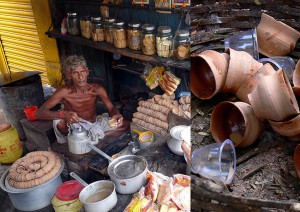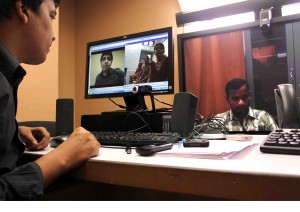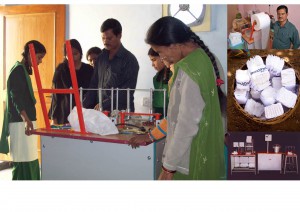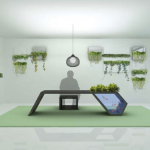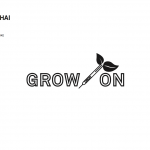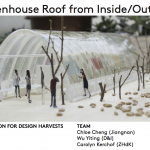Gangajal: Holy water from the river ganga is considered to be a purifying substance for Hindus. A few drops of water from there might exempt you of all your sins and give you a clean slate to work with. Scientifically the Ganga is supposed to have self healing properties that prevent diseases from spreading despite the extent to which it is polluted in the name of worship.
I have always it fascinating that some people believe that their hearts can be at peace with the water and have grown up with it being sprinkled on me with some consistency. In the ancient times, Hindu kings would travel only if they had their jars of holy water with them. Of course in this century you can simply buy your bottle of spiritual water.
Website: http://www.gangajal.com/
——————————————————————————————-
Komaya: For centuries cows have been considered sacred and if not sacred, just highly useful. There is a long standing practice of using cow dung as fuel in India. Women create dung cakes that are dried on a wall and later burnt for fuel. It waste nothing.
——————————————————————————————-
Clay Chai (Tea) Cup: The cup made of clay was once used in many parts of India to serve tea. Nowadays it is mainly seen in Calcutta and provides a source of income for impoverished potters who come from Bihar. These are easily disposable and bio degradable which is a great necessity with the number of tea drinkers and the frequency of tea consumption one finds in India. It also adds another flavour to the tea that simply doesn’t taste the same in plastic or ceramic.
——————————————————————————————-
Smokeless Chullahs: Cooking stoves that use firewood are still used in large numbers around Inida and there was a time when they were not equipped to redirect smoke. This led to an increase in pulmonary disorders in homes and mainly afflicted the women since they traditionally are the ones to prepare meals. The invention of the smokeless challahs turned their lives around and provided them with a healthier way of cooking and keeping the house warm.
——————————————————————————————-
Telemedicine: Narayana Hrudayalaya Foundation, Bangalore launched the Telemedicine Program in India has a large population and a disproportionate number of health specialists. Difficult for those below the poverty line to access elaborate centres. Due to the technology services available there it is possible to receive and give medical advice without having to leave home. This allows doctors to help more people in different parts of the country.
Website: http://en.wikipedia.org/wiki/Narayana_Hrudayalaya
——————————————————————————————-
Sanitary Napkin Machine:c is an innovator from Tamil Nadu who created sanitary napkin making machines for less than a quarter of the usual price to make it easier for women in villages to access healthier ways of dealing with their menstrual periods. Napkins in stores are usually very expensive and sometimes the women need to choose between feeding a family and taking care of her needs
Website: http://newinventions.in/
——————————————————————————————-
Physical Probes:
Haati Chaap: Paper products made out of elephant dung is an interesting way of finding alternative eco-friendly materials.
Website http://elephantpoopaper.com/
Pathachitra: This is what we call a very traditional story telling culture found in Orissa and Kolkata. It is passed down from father to son and each story is sung out loud to a group of people while unrolling a painted scroll as the narrative unfolds. The scenes are usually painted with vegetable dyes and have a very distinct style. Sad to say, this art is dying out as the fresh generations want to find better paid, more exciting jobs.
Website: http://www.youtube.com/watch?v=CCMX_6wPHdI
—
published by Meghna Saha
